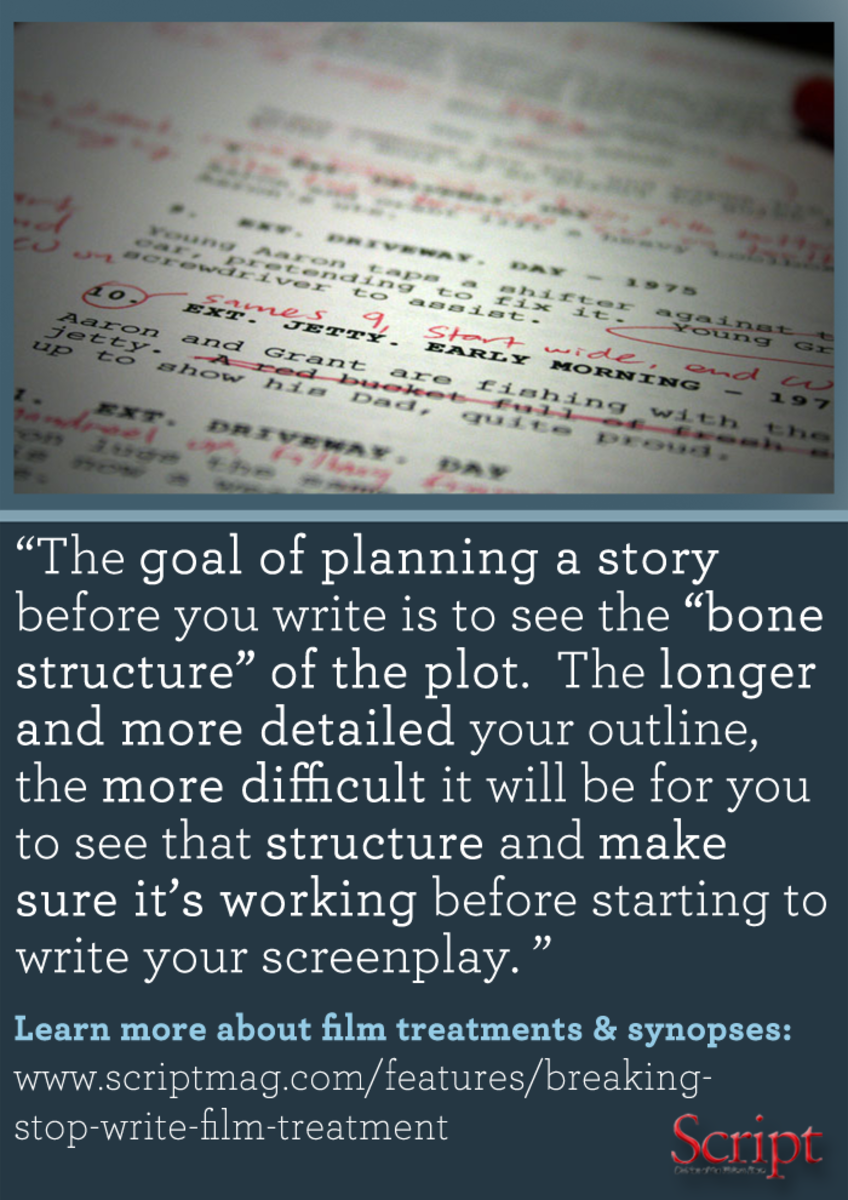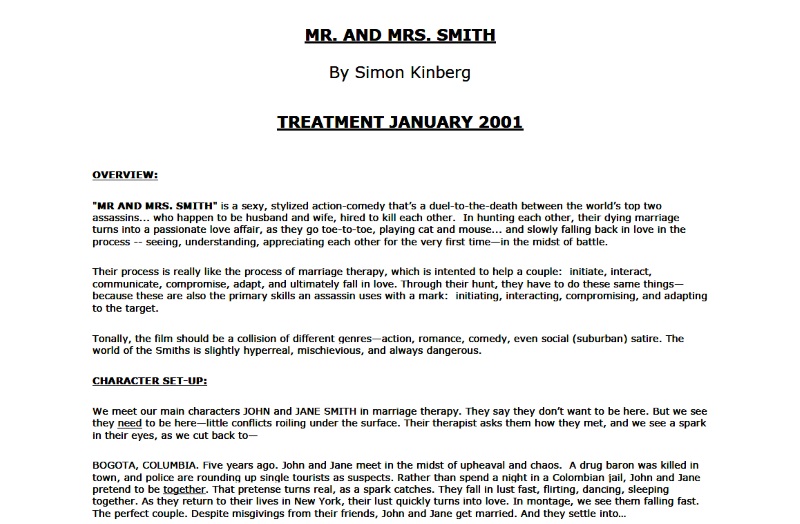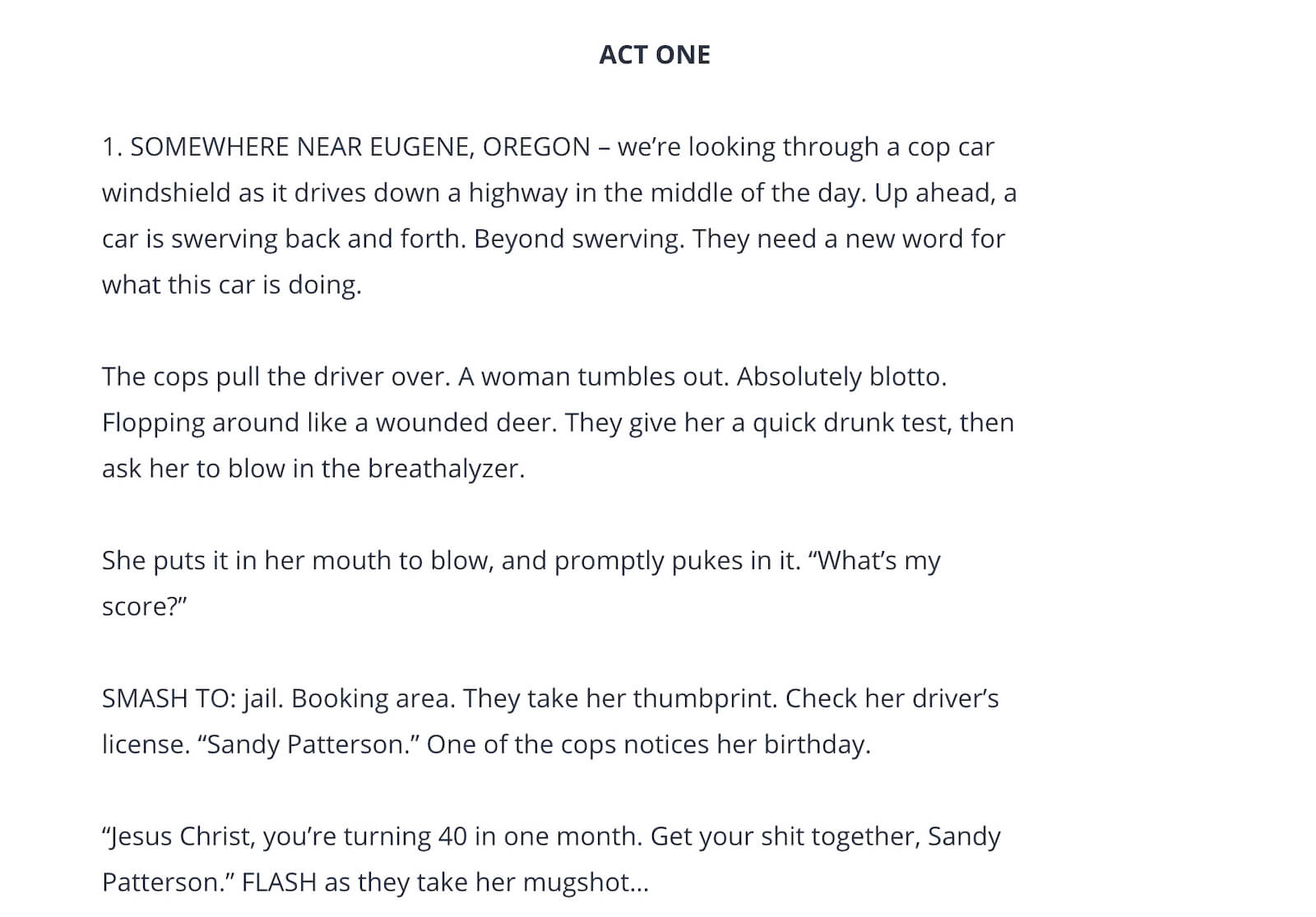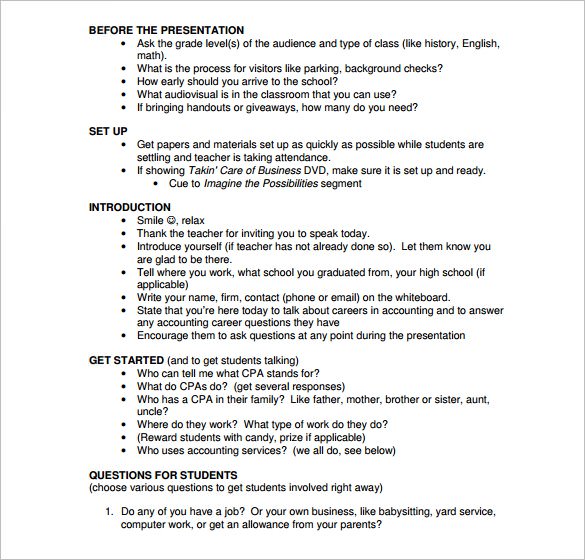
Then the words "Synopsis of (TITLE OF THE SCRIPT)," then the body of the synopsis.Ĭreate a cover page with your contact information, and a space for a personal note. Your name and contact information should appear at the top of the page. You should have your name and at least your phone number on this one page too. The paragraphs can be single-spaced, but there should be an extra line of space between them.

While you should use Courier font in your screenplay, Times New Roman should be OK here.

You need to have one-inch margins, and no less than 12-point font. Make sure it fits on a single sheet of paper. If allowed, have somebody read it and let them tell you what they thinks the story is about. This includes polishing the language, making sure the transitions between paragraphs are clear. Then go through it as you would any piece of writing checking for a cohesive body of work. Maybe you need to rethink the treatment, or maybe you need to rethink what the story is about. Determine if it reflects the main point of the story you identified in Step 1. If you get distracted, you may be trying to explain too much about a subplot or secondary character. As with the setup, try to reflect the tone of the story. Stick to what the main character is doing. (The paragraphs don't have to all be the same length - that's just a ballpark.) Try to not get distracted by subplots and minor characters. Write a short paragraph, under 100 words, for each section of the story. Usually you will find these around pages 25, 55, 85 and at the end. Pick out those four events or shifts and use them to pin down what each section is about. Most screenplays have a plot point that shifts the direction of the story every 25 to 30 pages.

It will be easier to write your synopsis if you break the script into four parts. While standard screenplay structure is three acts, the middle act is very long. Identify four sections of your screenplay. Try to pick your details in ways that reflect the tone of the story - funny, scary, dramatic. This will serve as the first 10 minutes of your screenplay, showing your character before the story gets going. Keep it under 100 words or less if possible. Write a rough version of your setup - the character and their situation. Think of a love story, where the "villain" may be a minor character of a fiancé, but the main conflict is between the two romantic leads. For the purposes of the short synopsis, the antagonist is the person who provides opposition to the main character throughout the story. There is a lot of debate over whether the antagonist is the villain or not. If possible, keep it to your main character, the protagonist, and whoever is providing the main opposition to them, the antagonist. The back story and subplots are typically attached to a particular character, so the fewer characters you mention, the better. The three things that waste the most space in a synopsis are the back story, secondary characters and secondary plot lines. (Or note what the very first and very last images are) This is what the audience will leave with, and it's important to the understanding of the story. One detail that many professionals use to help guide them here is to note what are the very first and very last actions are in the story. Therefore, you have to have a focus to tell you what to zero in on. You're going to have to cut out all kinds of important information to fit it into such a small pitch. "It's about lies." "It's about how love can cure you." Your message can be cynical or positive, but be aware of what it is. BUT, I will say that I have a copy of CJ's "Turn and Burn Screenwriting Guide" and I use PreWrite to flesh out initial concepts.Write a few notes to yourself about what your story is about. I spent a couple of hours over two days talking to him on the phone about "what" he wanted to see on the finished film, so it helped us understand his vision and made it easier for us to target his needs. From what I have seen, Independents have different expectations than Studios. It so depends upon your relationship with whoever is hiring you. Short end to the story, he loved it and now we get to skip writing a full-on Treatment and go to outlining. We realized it was too much too soon, so we ended up bullet-pointing out the second half of Act II and all of Act III.
Film script treatment example full#
So we wrote a 5-page "Synopsis" with Character backstory and arcs, then plot lines, etc., which really started becoming a full Treatment. He had also mentioned that he would then want a Treatment once hired, then Outline, etc. The Director initially asked us for writing samples, then pitched his idea/vision, and asked us to come back with our "take" on the story. Just today, my writing partner and I got a verbal "yes" on a paid writing assignment for a feature.

It so depends upon the Producer/Director who is hiring you.


 0 kommentar(er)
0 kommentar(er)
